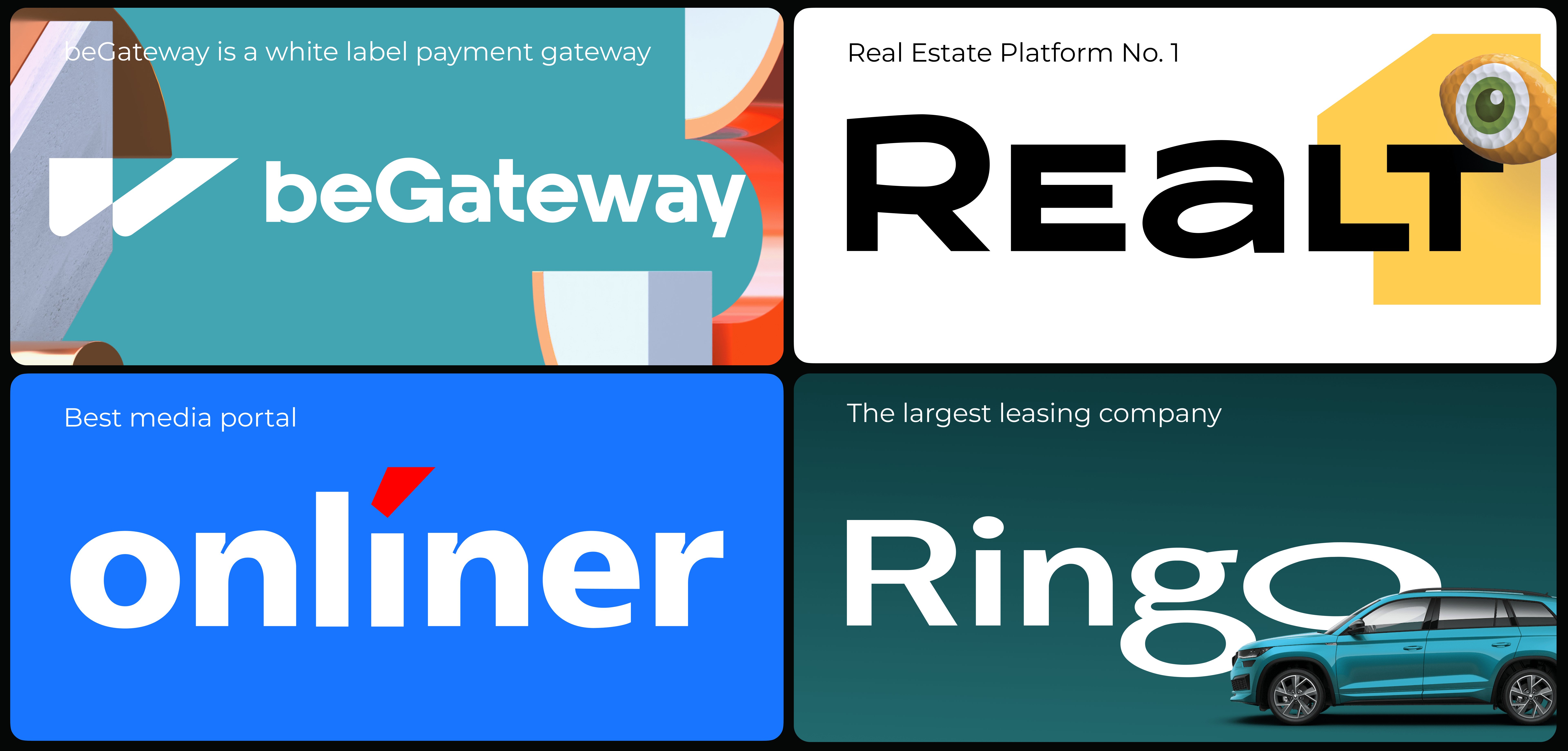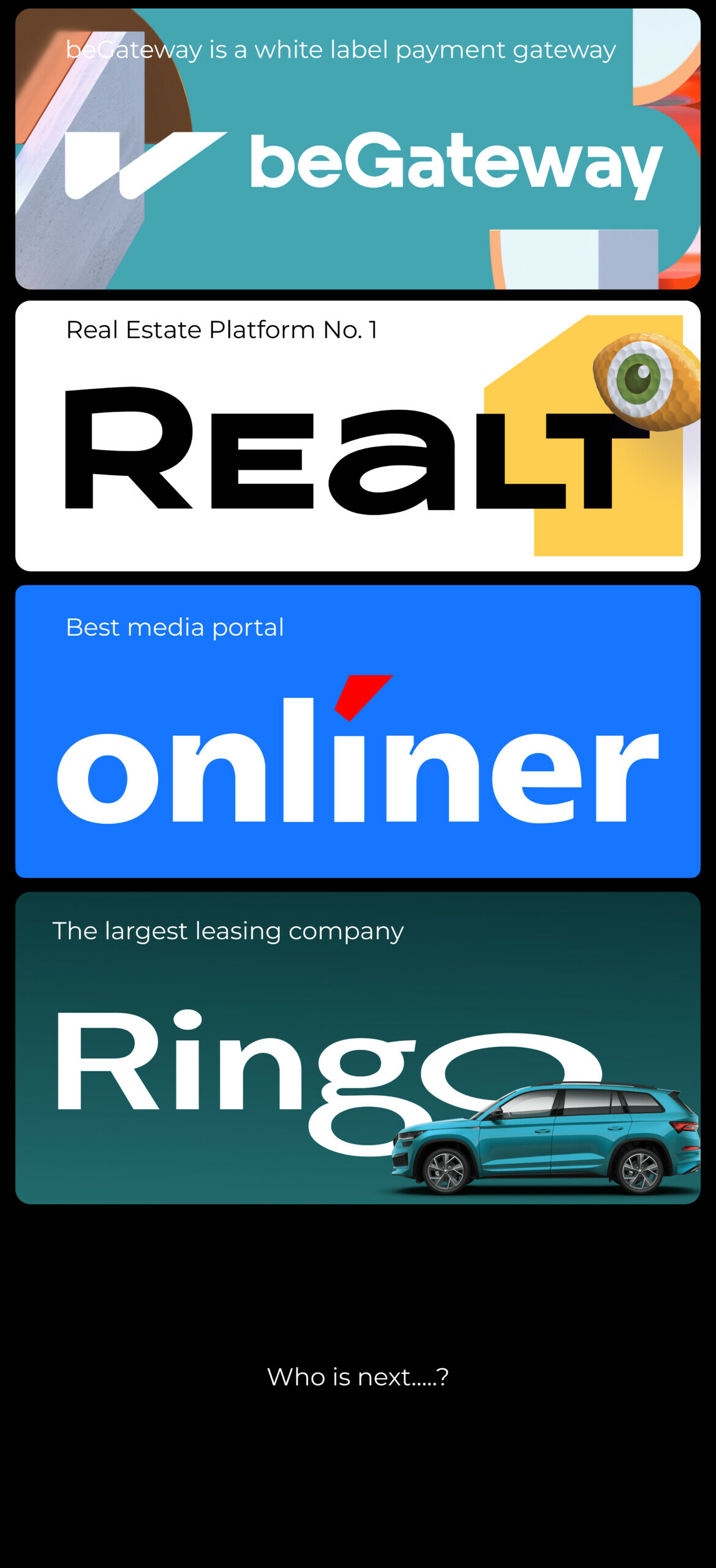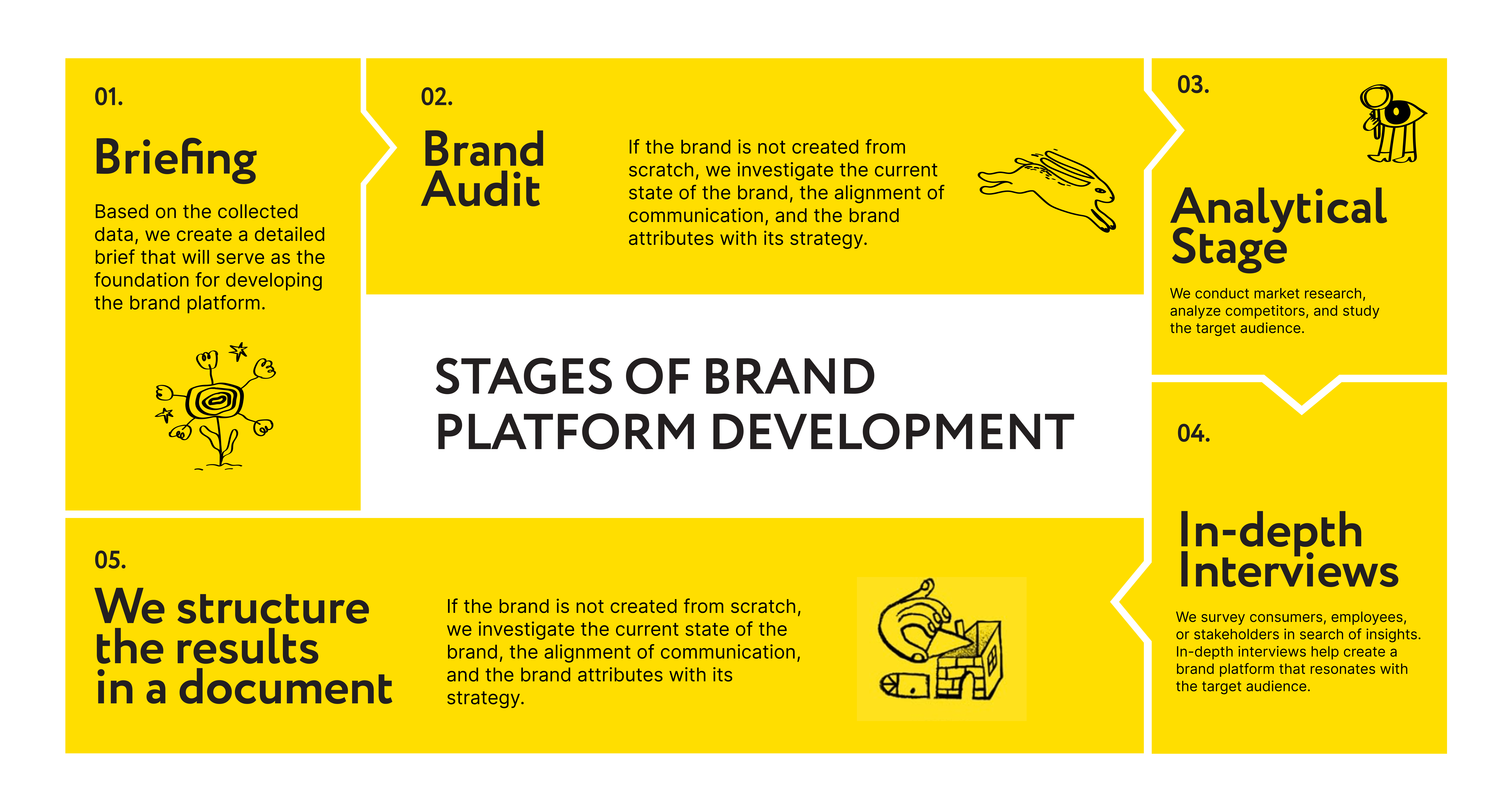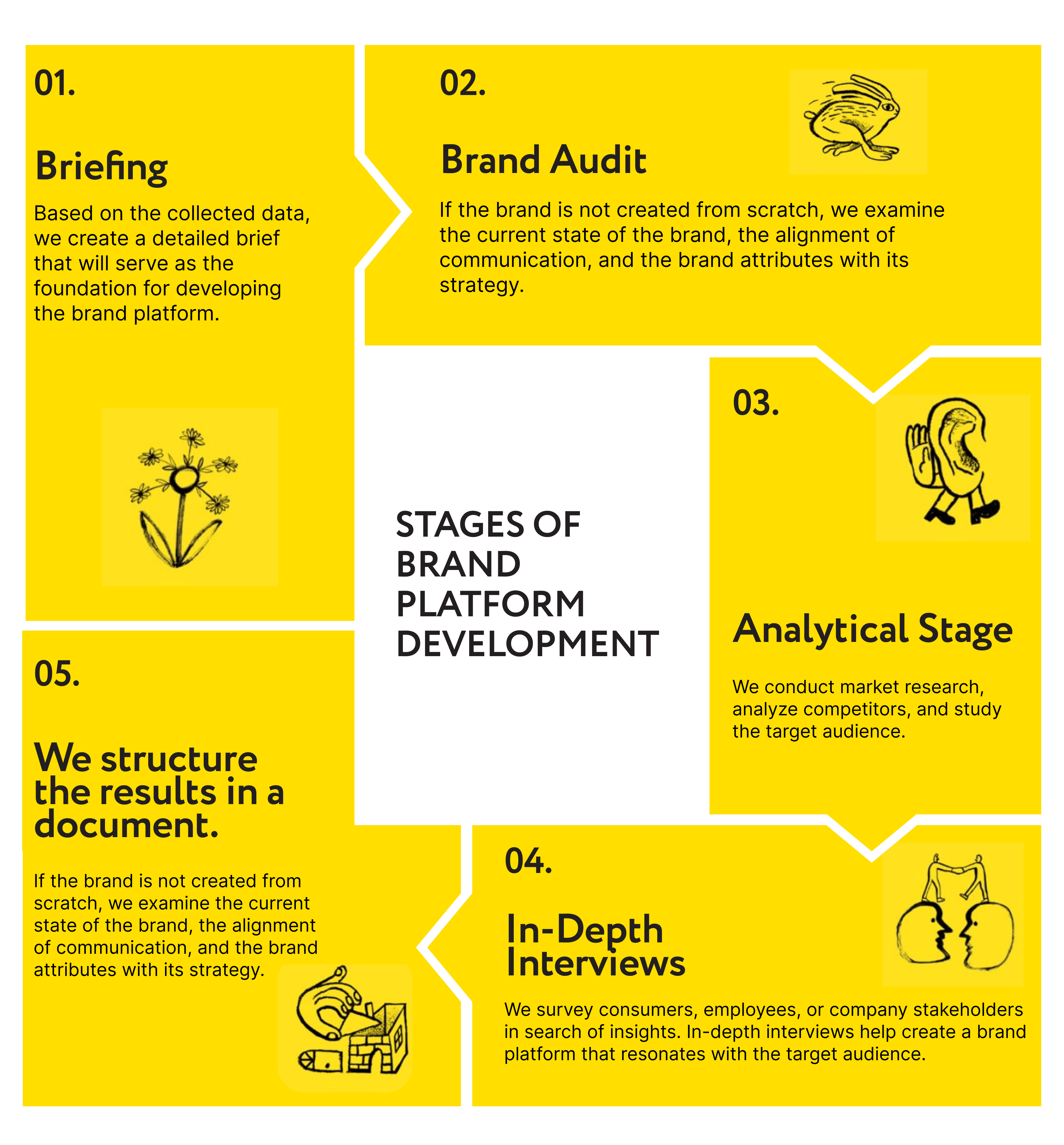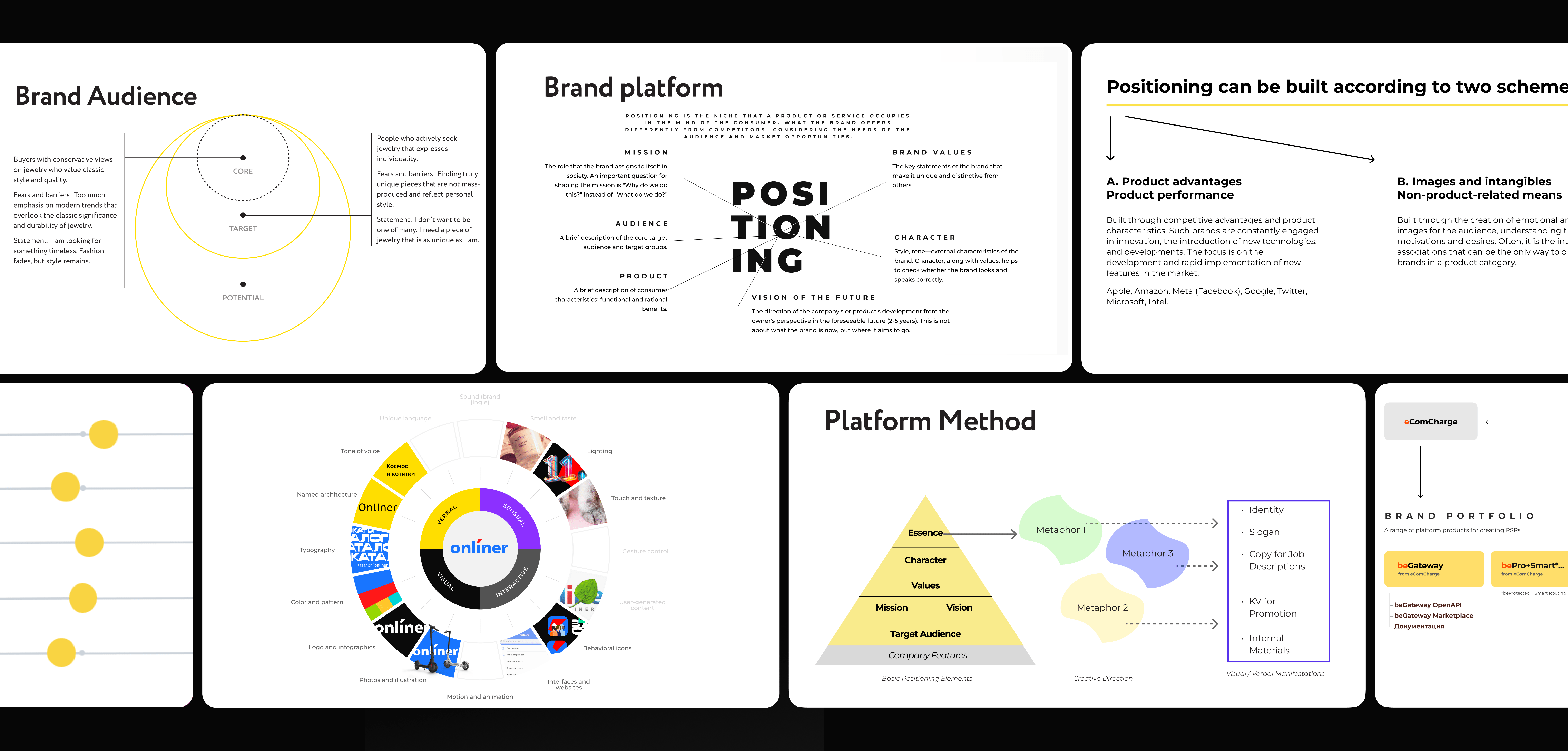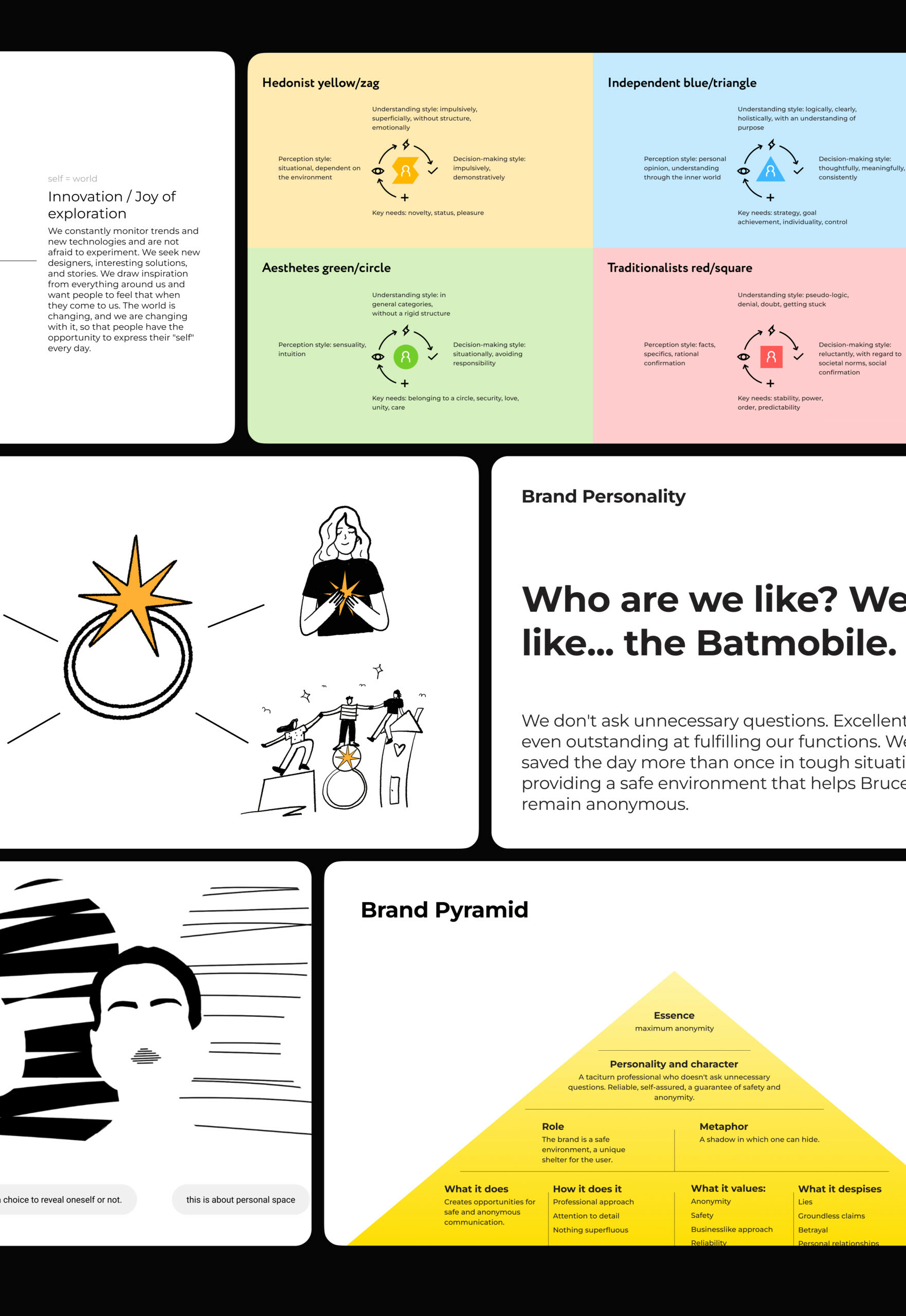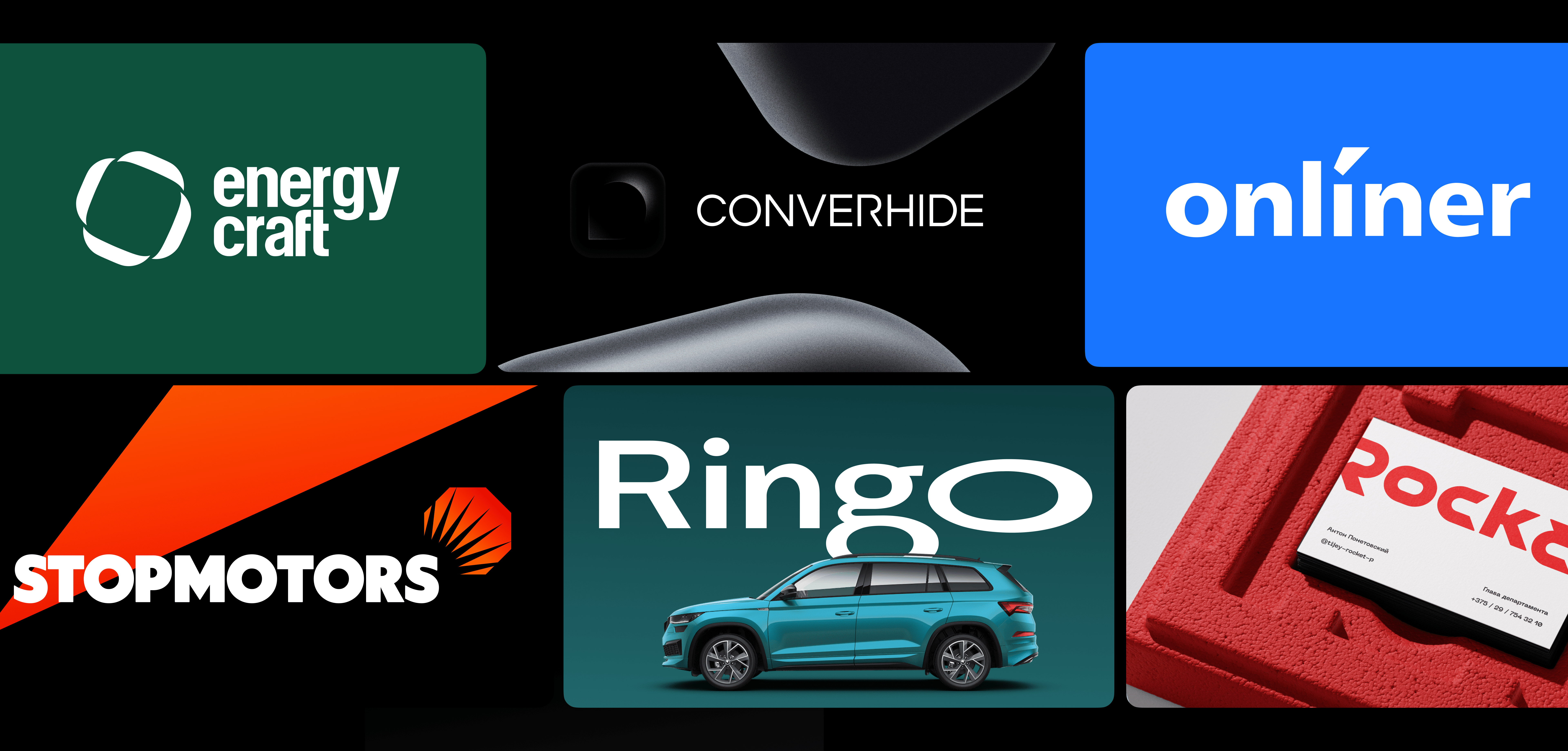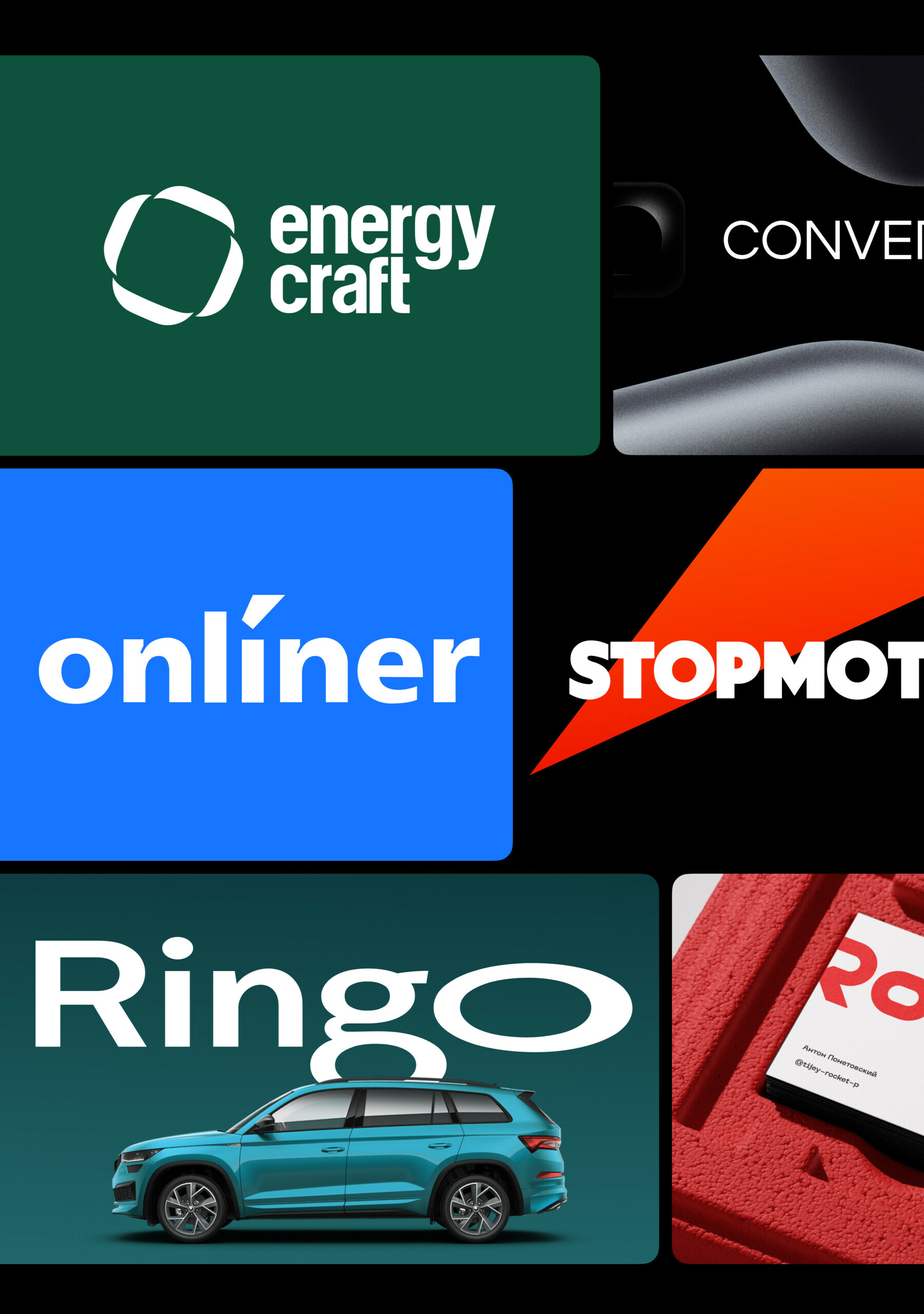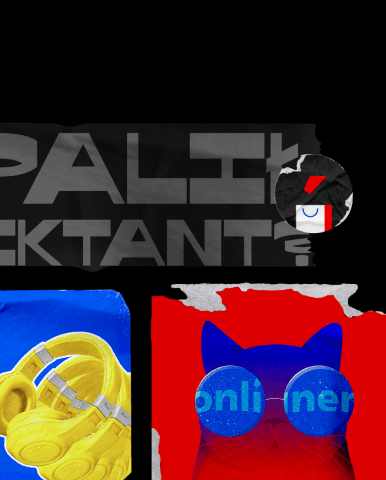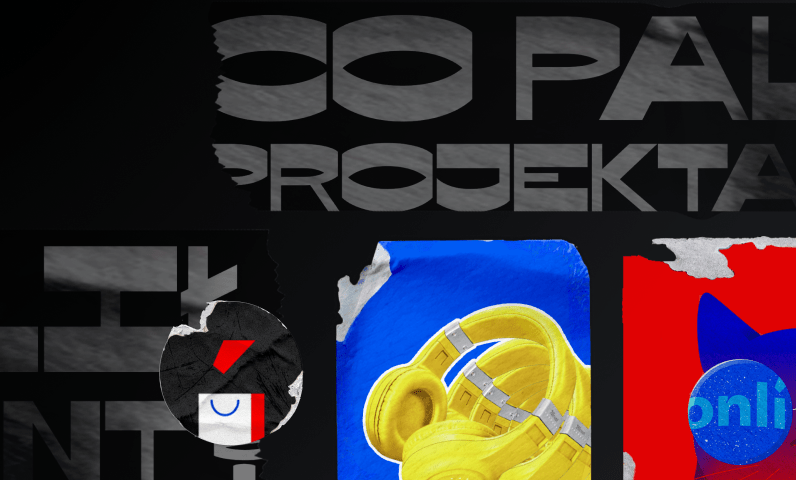Brand strategy
At Right, we build brands that demand attention. Our approach to developing a brand platform is rooted in a deep understanding of its core and a systematic process for shaping its identity.
A brand platform is the foundation on which a product’s or company’s entire identity is built. It serves as a guiding reference for the team throughout the project lifecycle, ensuring brand consistency and cohesion.
We draw on global best practices, our experience in building digital ecosystems, and a strong track record in creating impactful brands.
Step-by-step brand platform creation
- Briefing: We start by gathering information and shaping a detailed brief that becomes the foundation for building the brand platform.
- Brand audit: If the brand already exists, we assess its current state — reviewing its communications, visual identity, and how well they align with business strategy.
- Analytical stage: We conduct market research, competitor analysis, and study the target audience to understand the landscape and identify growth opportunities.
- In-depth interviews: We speak with customers, employees, and other key stakeholders to uncover meaningful insights. These conversations help shape a brand platform that truly resonates.
- Final documentation: All findings are consolidated into a structured brand platform document — a long-term reference that guides consistent brand development across all touchpoints.
Core elements of a brand platform
- Subject: a clear, functional description of the product or service and what it offers.
- Target audience: a detailed profile of your audience, including demographic, psychographic, and behavioral traits, to better understand their needs, motivations, and preferences.
- Rational and emotional benefits: a breakdown of both the practical features of your product or service and the emotional connections it builds with your audience.
- Brand values: the core beliefs and ideas that guide your business and reflect the brand’s personality.
- Mission: a statement of purpose that captures the brand’s philosophy, long-term vision, and what sets it apart from competitors.
- Brand personality: the set of human characteristics that define your brand’s tone, behavior, and how it’s perceived by customers.
- Positioning: a strategic definition of how the brand stands out in the market and in the minds of consumers.
Brand strategy frameworks and models
At Right, we tailor proven brand-building models to suit each client’s unique goals.
- Brand Pyramid: A structured model that organizes brand elements from foundational to core. At the base lie fundamental factors—such as market context and target audience—from which the next layers build upward, culminating in the brand’s essence or big idea.
- Brand Spider: This model views positioning as the result of the interconnected elements that define a brand or product—such as visual style, mission, utility, vision, and values. The «legs» of the spider symbolize how each component contributes to the overall perception.
- Brand Wheel: A visual framework that maps out all key identity elements—values, mission, emotional and rational benefits—offering a clear, cohesive view of the brand and helping to maintain image consistency across all touchpoints.
With these tools, we shape brands that are easy to recognize, hard to forget, and built to grow.
Building your brand strategy with us
Why choose Right?
- With over 20 years of team experience and more than 500 completed projects, we’re passionate about tech-driven products, startups, Web 3.0, cryptocurrency, PSP, and the creator economy. Our deep understanding of technical language and love for science-intensive projects set us apart.
- We believe in organic branding grounded in real insights. Instead of creating synthetic stories, we help brands discover and express their true identity. Leveraging thorough research, international best practices, proprietary methodologies, and creative thinking, we build brand leaders with a unique voice and charisma.
- We specialize in complex businesses. Whether it’s managing dozens of products, navigating multiple directions, correcting naming missteps, or dealing with a challenging legacy, this is where we thrive. We craft thoughtful brand architectures and scalable product pipelines designed to unlock enormous growth potential for years to come.
- We treat a brand’s legacy with care — preserving its core values, recognition, and respecting its loyal fans.
- And we don’t stop at strategy: we provide hands-on support during implementation and the initial rollout, working closely with your team every step of the way.
How much does brand strategy development cost?
Strategy development is a complex process that depends on various factors. For a personalized quote, please reach out to us through the contact form.
FAQs about Brand strategy
What exactly is a brand strategy — and why does your business need it?
A brand strategy is a long-term plan for building and developing a brand. It’s designed to shape a unique image of the company, create a strong emotional and rational connection with the target audience, and gain a competitive edge in the market.
What are the key elements of an effective brand strategy?
The main components of a brand strategy include:
- Unique selling proposition (USP)
- Defining the target audience
- Brand positioning
- Visual image and corporate identity
- Company values and mission
How do you get to know your target audience?
This requires thorough research that considers the demographic, psychographic, and behavioral traits of potential customers, along with their needs and preferences.
How do brand strategy and brand book differ from each other?
A brand strategy is the philosophy behind your brand, while a brand book is the guide that documents and communicates that philosophy.
What kinds of brand strategies exist, and how can you pick the best one for your business?
There are several approaches to brand strategy, such as leadership, differentiation, focus, and more. The best choice depends on your business specifics, market conditions, and overall company goals.
Talk through the brand strategy
How can you evaluate the effectiveness of your brand strategy?
Evaluating effectiveness means looking at key metrics such as brand awareness, customer loyalty, sales trends, and other indicators that show how your brand is perceived in the market.
What are the most common mistakes when developing a brand strategy?
Many businesses confuse business strategy with brand strategy, mixing internal goals—like becoming the most profitable player in a segment—with branding, which focuses on how customers perceive and engage with the company. Common pitfalls include not fully understanding the target audience, lacking clear positioning, overlooking competitor analysis, and inconsistency between the brand’s stated values and the company’s actual behavior.
Developing a brand strategy is a complex, high-level process. A weak or misguided strategy can lead to financial losses, reputational damage, and even the breakdown of the brand. The best way to avoid these mistakes is to work with experienced professionals who know how to craft an effective, authentic brand strategy.
How often should you review your brand strategy?
You should regularly revisit your brand strategy, especially during times of crisis or major business changes. It’s important to stay on top of new trends and evolving customer needs, and be ready to adjust your communication, products, or services accordingly.
What role does storytelling play in brand strategy?
Storytelling builds an emotional connection with your audience, making your brand feel more human and memorable. Sharing engaging stories about your brand strengthens how customers perceive you and boosts their loyalty.
How do you evaluate the quality of a brand strategy?
You can evaluate a brand strategy’s quality by looking at its structure and effectiveness. Experts assess structure based on clarity (clear positioning and mission), uniqueness (how you stand out from competitors), relevance (alignment with your target audience’s needs), consistency (a unified tone and style across all channels), and flexibility (ability to adapt to market shifts). Effectiveness, meanwhile, is measured by real-world results like growth in brand awareness, customer loyalty, and profitability. When a strategy performs well on these fronts, it’s considered strong and successful.
Contact us if your business needs a high-quality brand strategy.

